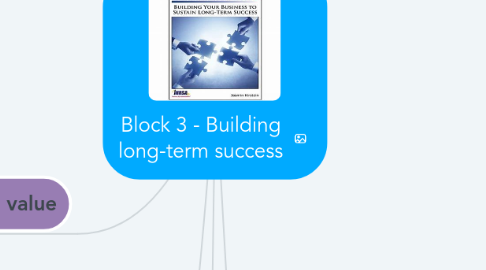
1. Cycles of innovation
1.1. Business Cycle
1.1.1. Market Economy
1.1.1.1. Connected periods of expansion and then recession
1.1.2. Long waves of economics.
1.1.2.1. New technology or product can create significant economic growth.
1.1.3. Product Life cycle
1.1.3.1. New product introduced to the market. Period of gradual or rapid growth. Reaches maturity consumed, not attracting new buyers or uses. Decline in which replaced by a new product.
1.2. Virtuous cycles - cycle produces a good outcome
1.3. Vicious cycles - generates a negative outcome
2. Politics of business and management
2.1. Political contexts
2.1.1. Institutions, values/interests and power
2.2. Societal perspective - political context existing in the world, Europe, country ,region, city
2.3. Organisational perspective - inside organisation, department, office outside business environment
2.4. Stakeholder analysis
2.4.1. Power vs Interest matrix
2.5. Political astuteness framework
2.5.1. Personal skills, Interpersonal skills, Reading people and situations, Building alignment and alliances, Strategic direction and scanning
2.6. Political astuteness skills
2.6.1. Engage in relationships with other individuals or organisations
3. Organisation and value
3.1. Innovation
3.1.1. Innovation value chain
4. Accounting for values
4.1. Shareholder value
4.2. Measuring issues
4.2.1. Financial statements
4.2.2. Balance sheet
4.2.3. Income statement
4.2.4. Accrual accounting
4.2.4.1. Historical cost; deprival value and fair value
4.3. Creating shared value
5. Operational risk
5.1. Risk terminology
5.1.1. Hazard
5.1.2. Impact
5.1.3. Likelihood
5.1.4. Risk
5.2. Potential sources of operational risk
5.2.1. Supply failures
5.2.2. Failures within the operation or process
5.2.3. Product/service design failures
5.2.4. Customer failures
5.2.5. Environmental disruption
5.3. Risk assessment matrix
5.3.1. Likelihood
5.3.1.1. Rare
5.3.1.2. Unlikely
5.3.1.3. Likely
5.3.1.4. Almost certain
5.3.2. Impact
5.3.2.1. Negligible
5.3.2.2. Minor
5.3.2.3. Major
5.3.2.4. Severe
5.4. Operational resilience
5.4.1. Operational risk assessment
5.4.1.1. Balance cost and effort of mitigating actions and savings they are expected to bring
5.4.1.2. Risk mitigating strategies
5.4.1.2.1. Avoid
5.4.1.2.2. Reduce
5.4.1.2.3. Transfer
5.4.1.2.4. Share
5.4.1.2.5. Take
6. Leadership and management
6.1. Leadership
6.1.1. Taking organisations into the future, finding opportunities
6.1.2. Motivational theories
6.1.2.1. Herzberg’s two factor theory of motivation
6.1.2.1.1. Presence of motivation
6.1.2.1.2. Absence of hygiene
6.1.2.2. Maslow’s hierarchy of needs
6.1.2.2.1. Physiological
6.1.2.2.2. Safety & Security
6.1.2.2.3. Love/belonging
6.1.2.2.4. Esteem
6.1.2.2.5. Self actualisation
6.2. Management
6.2.1. Processes
6.2.2. Planning
6.2.3. Budgeting
6.2.4. Structuring jobs
6.2.5. Staffing jobs
6.2.6. Measuring preformance
6.2.7. Problem solving
7. Time and Innovation
7.1. Business incubators
7.1.1. Start-up and early stage businesses through the provision of facilities, mentoring and coaching, training, networking and seed capital financing.
7.2. Start-up accelerators
7.2.1. Focus on moving technology-based firms rapidly from establishment to early stage venture funding and growth.
8. Planning for short, medium and long-term success
8.1. Short Term
8.1.1. Extension of existing production or ideas
8.2. Medium Term
8.2.1. Relaunch and dramatic recreation of a product or process.
8.3. Long Term
8.3.1. New visions for ways of doing things or a totally fresh type of product.
9. Employment relations
9.1. Economic perspective
9.1.1. Macro-economic level analysis
9.1.2. Micro-economic level analysis
9.2. Types of negotiation
9.2.1. Between managers
9.2.2. Grievance handling
9.2.3. Bargaining
9.2.4. Group problem solving
9.3. Employee inclusion
9.4. Employee participation
9.5. Legal prespective
9.6. Empowerment
9.6.1. Flexible working
10. Quality and improvement
10.1. Six Sigma
10.2. Quality assurance (QA)
10.3. Quality control (QC)
10.4. Seven key tools
10.4.1. Histogram
10.4.2. Control chart
10.4.3. Scatter diagram
10.4.4. Pareto chart
10.4.5. Checklist
10.4.6. Cause and effect diagram
10.4.7. Stratification
10.5. Perceptions-based quality models
10.5.1. Zone of tolerance
10.5.1.1. Expectation of service level
10.5.1.1.1. Adequate
10.5.1.1.2. Desired
10.6. Quality gaps model
10.6.1. Exploring customer satisfaction
10.7. Dimensions of service quality
10.7.1. Tangibles
10.7.2. Reliability
10.7.3. Responsiveness
10.7.4. Assurance
10.7.5. Empathy
10.8. Strategic improvement
10.8.1. The importance-performance matrix
10.8.1.1. Judge the importance of performance measures to customers
10.8.1.2. Judge the performance against competitors
10.8.1.3. Match performance against characteristics
10.8.1.4. Develop improvement plans
11. Marketing in the long-term
11.1. Relationship marketing
11.1.1. Customer loyalty
11.1.2. Customer value and customer satisfaction
11.1.3. Commitment, trust, customer orientation and communication
11.1.4. Service-dominant logic
11.1.5. Types of relationships
11.1.5.1. Seller-maintained
11.1.5.2. Buyer-maintained
11.1.5.3. Bilatera
11.1.6. Marketing loyalty ladder
11.1.6.1. Partner
11.1.6.2. Advocate
11.1.6.3. Supporter
11.1.6.4. Client
11.1.6.5. Purchaser
11.1.6.6. Prospect
11.1.7. Life cycle
11.1.7.1. Awareness
11.1.7.2. Exploration
11.1.7.3. Expansion
11.1.7.4. Commitment
11.1.7.5. Dissolution
11.1.7.6. Indicators
11.1.7.6.1. Psychological
11.1.7.6.2. Behavioural
11.1.7.6.3. Economic
11.1.8. Relationship states
11.1.8.1. Transactional
11.1.8.2. Transitional
11.1.8.3. Communal
11.1.8.4. Damaged
11.1.8.5. Migrate mechanisms
11.1.8.5.1. Exploration
11.1.8.5.2. Endowment
11.1.8.5.3. Neglect
11.1.8.5.4. Betrayal
11.1.8.5.5. Recovery
11.1.8.6. Relationship constructs
11.1.8.6.1. Commitment
11.1.8.6.2. Trust
11.1.8.6.3. Norms
11.1.8.6.4. Dependence
11.2. Internal marketing
11.2.1. Internal marketing communication
11.2.2. Unfair customers
11.2.2.1. Verbal abusers
11.2.2.2. Blamers
11.2.2.3. Rule breakers
11.2.2.4. Rule makers
11.2.2.5. Opportunists
11.2.2.6. Return aholics
11.2.3. Types of employees
11.2.3.1. Brand champions
11.2.3.2. Brand agnostics
11.2.3.3. Brand cynics
11.2.3.4. Brand saboteurs
